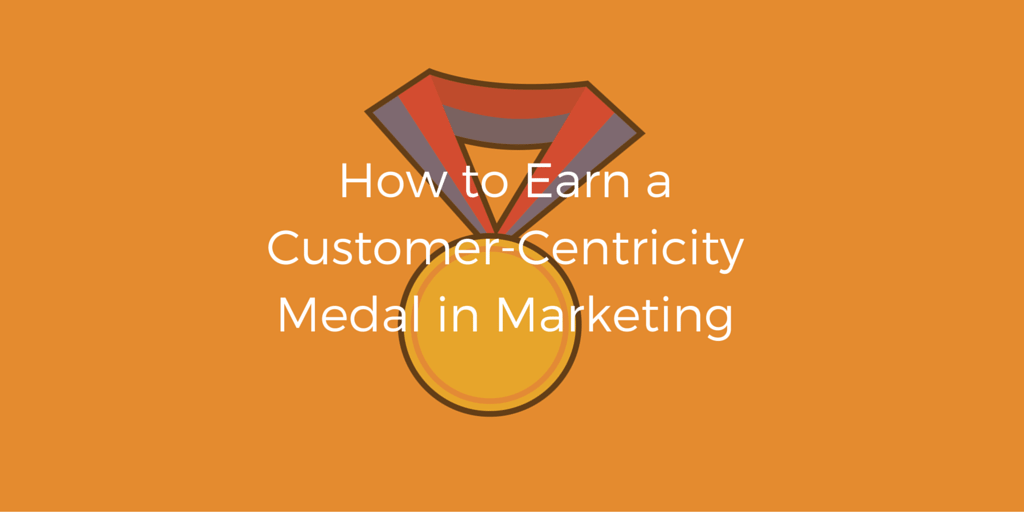When you search under the term Customer Centricity, there are over 865,000 hits. When you look for the term customer experience, you find over 51 million items. Clearly, Forrester wasn’t kidding when they said we’ve entered the Age of the Customer. Today, with customers in the driver seat, the proliferation of marketing channels, and the equalizing forces of the Internet, it has become a challenging environment in which to be a customer-centric Marketer.
At the same time, being customer-centric is no longer optional. Any company that wants to increase market momentum, customer share, and new product adoption needs to have well-honed skills and the determination to play the game. Why? A study by the CFO Alliance provides some insight into the importance of customer-centricity:
- Almost 40% of the study participants identify top line revenue growth as the #1 financial challenge facing them this year.
- Over 50% of CFOs in the study identified expanding relationships with existing customers as the top strategic factor driving both company profits and growth. They also set expanding customer engagement into new markets as one of the highest priorities this year.
- Only 12% believe they know their customers well enough to influence their behaviors.
For many companies, entering the Age of the Customer requires significant shifts in Marketing methods, especially for traditional product-centric B2B companies. For these companies, shifting the value chain will be the challenge. To win in the Age of the Customer, your company is going to need a more competitive strategy: one that no longer focuses on chasing customers through products, but instead begins with individual customer wants and needs.
The new field on which we play the Marketing game is an exceptional opportunity. Marketing, in all its forms (marketing communication, corporate marketing, field marketing, strategic marketing, product marketing, customer marketing, solution marketing, industry marketing, etc.), is the only function within the organization with the word “Market” in it. Therefore, it is the best starting block from which to pull ahead in the race to achieve customer-centricity.
How to Earn a Customer-Centricity Medal in Marketing
Winning on the customer-centricity stage means more than just changing how you market to your customers. It means modifying how you manage your Marketing. How do you begin? Well what better way than to learn from the champions? With the summer Olympics upon us, we can glean three valuable lessons from the world’s best athletes. Similar to Marketers, Olympians strive to set themselves apart and become champions, and just like us, they all have the same basic resources and backgrounds from which to begin their road to gold. Separate yourself from the pack. Embrace these three Olympic techniques and take your customer-centricity to the next level.
- Mindset. Olympians have a different mindset. They see winning as a lifestyle and not simply as the consequence of a prescribed amount of training. Similarly, Marketers must look at customer-centricity as an approach where they view leads and customers as long-term relationships that must be nourished rather than quick transactions that have no relevance far into the future. This has implications from how you organize and develop your solutions to how you market and sell to your customers. With a wider and more Olympic mindset, your focus is no longer on creating discrete customer transactions. Instead, your focus moves to creating ongoing holistic experiences across the customer lifecycle.
- Holistic approach. Olympians know how to stay well-balanced under intense pressure and scrutiny. Just like these elite athletes, as a Marketer, you will need to be able to triumph above the pressures that are driving your business. The best technique to do this is by training your company in the advantages of customer-centric marketing. For this transformation to take hold, Marketing organizations need to lead their company in taking a more holistic approach toward customers. You need to help your C-suite see that moving from “selling your product” to “solving your customers’ problems” is beneficial, especially when under intense pressure to deliver. How well you understand and can profitably solve customer problems should serve as the basis for ALL your business decisions. What you develop. How you go to market. The partners you choose. Serving your customers naturally creates balance under pressure.
- Practice. Anders Ericsson’s research found that it takes 10,000 hours of deliberate practice become an expert. Just like the champions know practice makes perfect, to take the medal for customer-centricity, Marketing must help the organization do more than use customer-centricity as window-dressing. To become successful, many of the customer-centric processes and skills need to be incubated and built within the Marketing organization.
With all this training it takes to develop a new Marketing regimen, is it worth the effort? The short answer is, yes. A Booz Allen study found that businesses that are successful at customer-centricity outperform industry peers two-to-one in revenue growth and generate margins 5%-10% above their competitors. When Marketing enables the organization to be more customer-centric company, it enables the company to achieve a better competitive position, realize greater market momentum, gain market share, increase returns on shareholder equity, and generate faster growth. Ready to start your training to help your organization grow? Learn more about how Marketing can help you drive organic growth.

